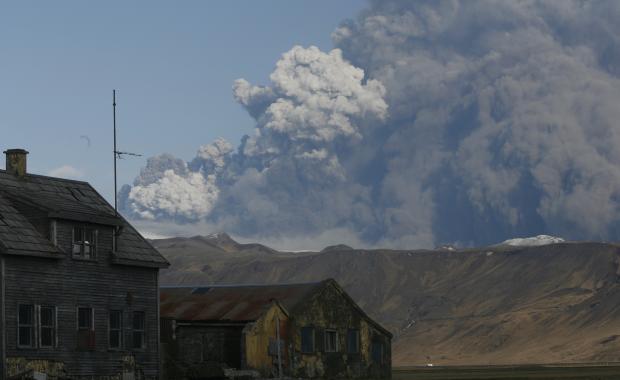Earlier this week, increased seismic activity around Iceland’s Bardarbunga volcano caused the north Atlantic country to put airlines, residents and travelers on alert. CNN reported on Wednesday that “scientists registered some 2,600 earthquakes between early Saturday morning and Monday evening.” A story in The Icelandic Review says, “Scientists are cautious because nobody wants to be the one who falsely predicted an eruption, but even so they seem to be leaning towards the opinion that probably the old volcano is waking up.” While still stable as of this publishing, there is anxiety about what an eruption at Bardarbunga could mean.
Elizabethtown College’s Robert Wheelersburg, professor of anthropology, lived and worked as a U.S. Army Reserve officer in Iceland for a decade, and he continued his travels there as an academic, researching Icelandic culture. He shared his 25 years of experience with the terrain, people and culture of Iceland with WITF’s Scott Lamar on the Friday, August 22, edition of Smart Talk.
The 11-minute segment was packed with details about traveling to and from the country, a look at how volcanoes have been part of Iceland’s recorded history since the viking age (in the 800s) and a glimpse into the life of Icelandic people. Many of the mountains are named after mythological creatures and gods, including Laki. In the 17o0s, Laki erupted, producing the largest lava flow in history, according to Wheelersburg. About 20 percent of Iceland’s population died.
Lamar asked Wheelersburg about the terrain of the country; the anthropology professor noted that about 90 percent of the terrain is uninhabitable because of “glaciers and sand; there are more than 200 volcanic mountains and vents on the island.” He further explained that Iceland sees so much activity because the island is located on the Mid-Atlantic Ridge, where the North American Plate and Eurasian Plate meet. “About every five years there’s an eruption,” he told Lamar.
“If there’s anything working for FEMA taught me, it’s that we can’t control nature.”
Volcanoes in Iceland are different than the red lava flows you’d see in Hawaii, Wheelersburg said. Icelandic volcanoes typically produce an ash cloud; this is the phenomenon that impacted European air travel in 2010, when Eyjafjallajökull erupted. That disruption to air travel is what many with upcoming vacations or business travel plans that fly through northern Europe fear.
“That’s what causes the problems,” he said. Ash clouds are just as dangerous on the ground; rental cars explicitly state that users should not attempt to drive through one; it can crack windshields and destroy motors.
Wheelersburg explained that, similar to the United States’ FEMA, Iceland sets up hazard zones. But, while Icelandic people don’t necessarily want to live at the foot of a volcano, these formations don’t scare them out of their homeland.
“They’re not leaving,” Wheelersburg told Lamar of the proud Iceland citizens. They “accept the life and death of it.” Still, residents know when they need to seek safety. As of today, about 500 people have been evacuated from the area near the volcano.
Wheelersburg added, “If there’s anything working for FEMA taught me, it’s that we can’t control nature.”
LISTEN TO THE COMPLETE INTERVIEW.



